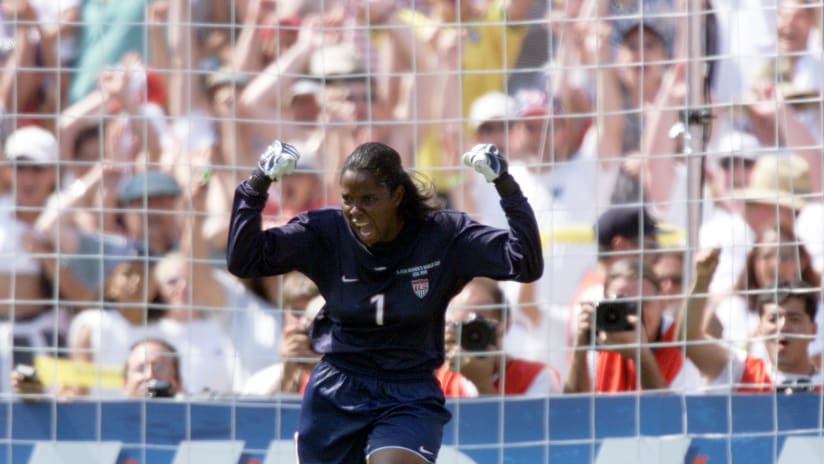Soccer, or “Football” for our friends across the pond, has been around for centuries. Aptly named the beautiful game, soccer has earned its nickname not simply for the elegance of the action on the pitch but also for its ability to connect countries and cultures across the globe. While male players tend to get more attention, the accomplishments of the sport’s female athletes should not be understated. After all, the U.S. Women’s National Team has all the hardware to prove this, having won four World Cups, four Olympic gold medals, and nine CONCACAF Gold Cups at the International level. However, it wasn’t always like this, and U.S. women’s soccer has gone through a lot of development to be where it is.
It is important to keep in mind that soccer has not been around for very long in the United States, and especially for women, sports in general weren’t an option for most of our country’s history. Women’s soccer in the states didn’t begin to find traction until 1972 after Title IX prohibited any kind of sex-based discrimination in public education systems, including access to sports. According to a recent NBC Sports article, “By 1978, the same year that the law became mandatory, six times as many high school girls were participating in competitive sports compared to 1970. To date, female participation in sports has increased by 1057% at the high school level and 614% at the collegiate level since Title IX’s passage.”
However, in the public’s eyes, that growing popularity was a different story. There is some debate on when women’s soccer began to gain notoriety, but most sources agree that the 1999 World Cup changed the women’s game forever. The tournament was held in the United States, with games drawing huge crowds. But, the team shot to true stardom by winning the whole dang thing. According to a study at Duke University, “In many ways, the success of the ’99 World Cup trumped what many thought was possible in the world of women’s sports and created a template for success in the future.”
The U.S. Women’s team claimed victory over China in an anxiety-inducing match that saw both teams stuck at 0-0 through golden goal overtime. A penalty shootout ensued, and the Red, White, and Blue notched five goals to China’s four. Brandi Chastain scored the winning goal, and the iconic photo of her on her knees, jersey-in-hand will forever be burned into people’s memories. The ‘99 World Cup also gave us household names such as Mia Hamm, and of course, Briana Scurry – the Minnesotan goalkeeper who made the save that clinched the victory.
After solidifying that World Cup success, a market for women’s soccer in the U.S. began to take shape. The creation of the Women's United Soccer Association – of which Scurry was one of 20 founding members – was made to fill that growing need. The founding members were huge advocates for equal pay, helping to pave the way for the WUSA to become the first paid women’s league in the world. The WUSA was one of the predecessors of what is now the National Women's Soccer League – which currently has 12 franchises across the United States.
Since the ‘99 World Cup, both the national team and the NWSL have continued to grow into what we know them as today – athletes at the top of their game who have made headlines on and off the pitch. The U.S. Women’s National Team now has the most overall FIFA World Cup wins (four), and in 2022, reached an unprecedented settlement of $24 million in their fight for equal pay.
The NWSL has continued to garner more attention as well. In 2022, the league surpassed 1 million fans for the first time, marking a 70% year-over-year growth. The attendance numbers give hope for the future of the sport, and the NWSL success has even gone on to inspire the creation of a pre-professional league.
In 2021, the pre-professional USL W League was formed – of which Minnesota Aurora FC was one of the founding members. This is a huge step in the efforts to grow a stronger foundation for the sport, and according to the USL W website, “The League and its member clubs are committed to investing in women’s soccer – through not only financial resources but also with time, energy, and attention – and are united in our mission to grow the women’s game.”
Aurora FC is the perfect example of the league being a success. The club made its debut in 2022, selling out 6 of their 9 home matches, and ending the season as league runner-up. If that wasn’t impressive enough, the newly-established club was named the organization of the year by the USL W. Now, in 2023, the USL W has grown to over 60 teams, a truly impressive evolution for such a young league.
There is a lot to look forward to in women's soccer. The World Cup is this year, the NWSL starts up this month, and the Minnesota Aurora have their home opener on Wednesday, May 24 vs Rochester FC. As Minnesotans and soccer fans, let’s go make that a sold-out crowd. The world is changing, soccer is gaining traction in the United States, and the spotlight is getting brighter for women who make waves in the sport. It is truly exciting to think about what will be accomplished next.




